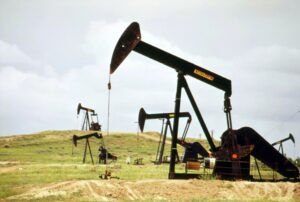
Importance of oilfield inspections
Oilfield inspections are crucial in the oil and gas industry for ensuring safety, compliance, and efficient operations. These inspections help identify potential hazards, equipment failures, and leaks, preventing accidents and environmental damage. Regular inspections also ensure that equipment and facilities are functioning properly, minimizing downtime and maximizing productivity. Inspections play a vital role in maintaining the integrity of oilfield infrastructure and promoting a culture of safety and responsibility within the industry.

Safety and compliance regulations
Oilfield inspections are essential to ensure that safety and compliance regulations are met in the oil and gas industry. Inspections help identify potential hazards and ensure that equipment and facilities are compliant with regulations to prevent accidents and environmental damage. Regular inspections also help in maintaining the integrity of the infrastructure and reducing the risk of costly downtime due to equipment failure or regulatory non-compliance.
Types of oilfield inspections
There are different types of oilfield inspections performed in the oil and gas industry. These inspections include:
- Routine Inspections: Regular checks are conducted on equipment, facilities, and processes to ensure everything is in order and to identify any potential issues early on.
- Safety Inspections: These inspections focus on ensuring that all safety protocols and regulations are being followed to prevent accidents or environmental hazards.
- Environmental Inspections: This type of inspection assesses the impact of oilfield operations on the surrounding environment and ensures compliance with environmental regulations.
- Quality Control Inspections: Inspections are conducted to maintain the quality of products and processes, ensuring that they meet industry standards and specifications.
Technology and equipment used
Oilfield inspections use advanced technology and specialized equipment to ensure the safety and efficiency of operations. Some of the key tools and techniques involved in these inspections include:
- Drones: Used for aerial surveillance and to access hard-to-reach areas.
- Advanced Sensors: These devices are deployed to detect potential leaks, corrosion, or structural weaknesses in equipment.
- Robotic Crawlers: These are utilized for inspecting pipelines and other infrastructure in challenging environments.
- Thermal Imaging: This technology helps identify issues such as overheating or equipment malfunctions.
- Remote Monitoring Systems: These allow real-time monitoring of equipment and processes, enabling timely interventions when necessary.
By leveraging these technologies, oilfield inspections provide proactive maintenance and enhance the overall safety and productivity within the oil and gas industry.
Role of inspections in preventing accidents
Inspections play a crucial role in preventing accidents in the oil and gas industry. They help identify potential hazards and ensure that all equipment and processes meet safety standards. By conducting regular inspections, companies can proactively address any issues before they lead to accidents or environmental damage. Additionally, inspections help maintain the integrity of oilfield infrastructure, reducing the risk of leaks and spills that could harm workers and the environment. Regular and thorough inspections are essential for maintaining a safe and sustainable oilfield operation.
Environmental impact of oilfield inspections
Oilfield inspections play a vital role in monitoring and minimizing the environmental impact of oil and gas operations. Here’s how they contribute:
- Environmental Monitoring: Inspections help identify and address potential environmental hazards, ensuring that oilfield activities comply with environmental regulations and standards.
- Reducing Pollution: Regular inspections help prevent and mitigate potential oil spills, leaks, and other environmental risks, thereby minimizing the impact on surrounding ecosystems.
- Protecting Wildlife: By identifying and addressing any environmental risks, inspections contribute to preserving the natural habitats of wildlife in and around oilfield areas.
- Sustainable Practices: Inspections promote the adoption of sustainable practices in oilfield operations, such as waste management and emissions control, to minimize the environmental impact.
Overall, oilfield inspections are crucial for ensuring environmental responsibility and sustainability within the oil and gas industry.
Training and qualifications for inspectors
Inspectors in the oil and gas industry must undergo rigorous training to ensure they are qualified to perform their duties. Below are the key points to consider:
- Inspectors typically need a high school diploma or equivalent, along with specialized training in oilfield operations and safety procedures.
- They may also complete a certification program offered by organizations such as the American Petroleum Institute (API) or the International Association of Drilling Contractors (IADC).
- In addition to classroom instruction, inspectors often receive hands-on training to familiarize themselves with the equipment and technologies used in the field.
Cost and efficiency of inspections
Inspections play a vital role in ensuring the safety and productivity of oilfields. Efficient inspections can save time and money by identifying potential issues early on. However, the cost of inspections varies depending on the type and frequency of inspections required, as well as the size and complexity of the oilfield. Balancing cost and efficiency is essential for achieving optimal results and minimizing downtime.
Trends and advancements in oilfield inspections
Advancements in technology have significantly impacted oilfield inspections, increasing efficiency and accuracy in identifying potential issues and ensuring safety. Drones are now being used for aerial inspections, allowing for a more thorough and cost-effective examination of remote and hard-to-reach areas. Additionally, the use of advanced sensors and data analytics has enabled predictive maintenance, reducing downtime and improving overall operational reliability. These trends represent a shift towards proactive maintenance and risk management, ultimately leading to enhanced productivity and cost savings.
Summary and future outlook
Oilfield inspections play a crucial role in ensuring the safety, efficiency, and compliance of oil and gas operations. With the advancements in technology, the future of oilfield inspections looks promising as companies are increasingly adopting innovative inspection methods such as drones and sensors. These developments aim to enhance the accuracy and speed of inspections while minimizing risk to personnel. Additionally, the use of data analytics and artificial intelligence is expected to further optimize inspection processes, leading to cost savings and improved asset integrity management.
